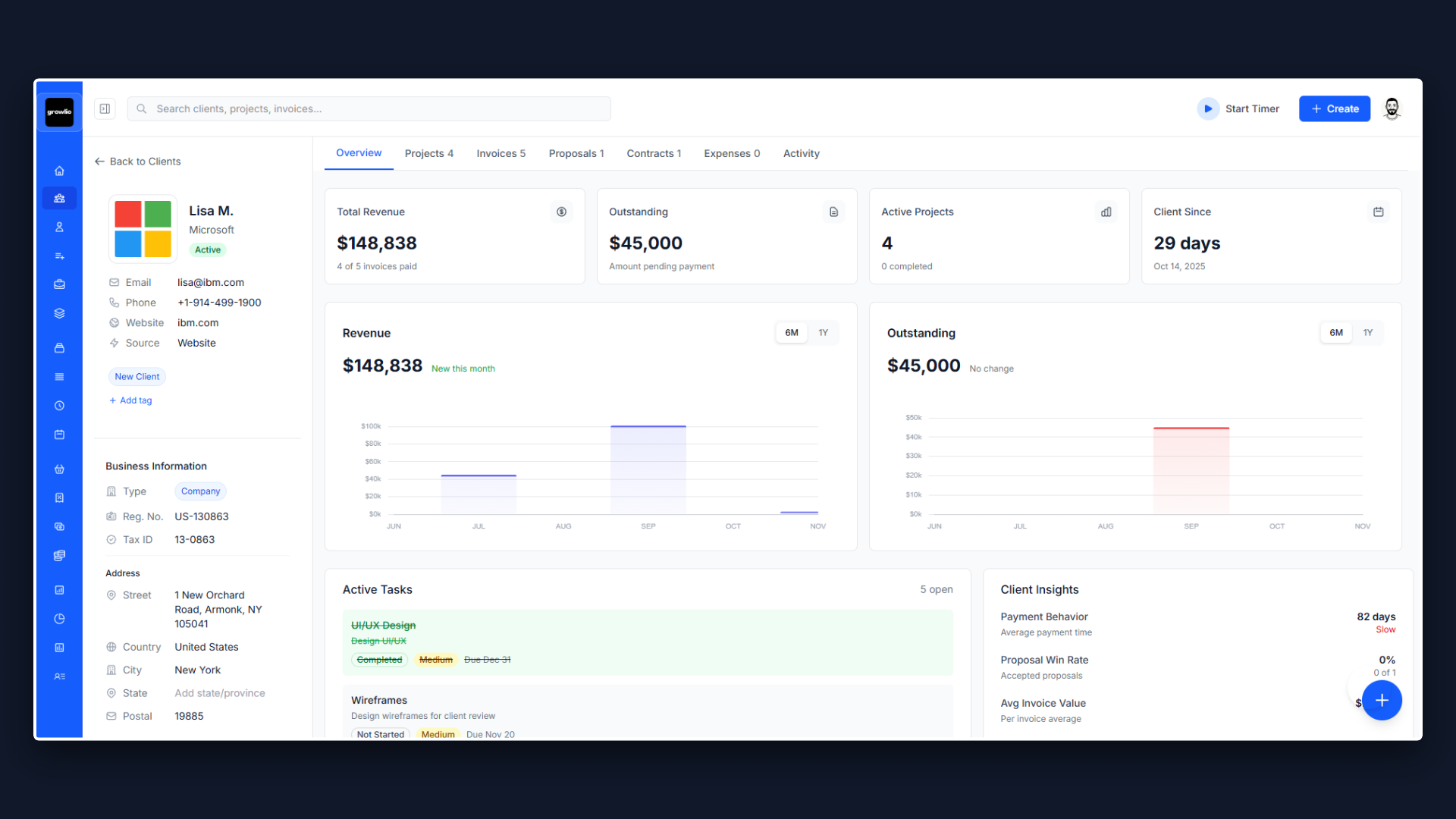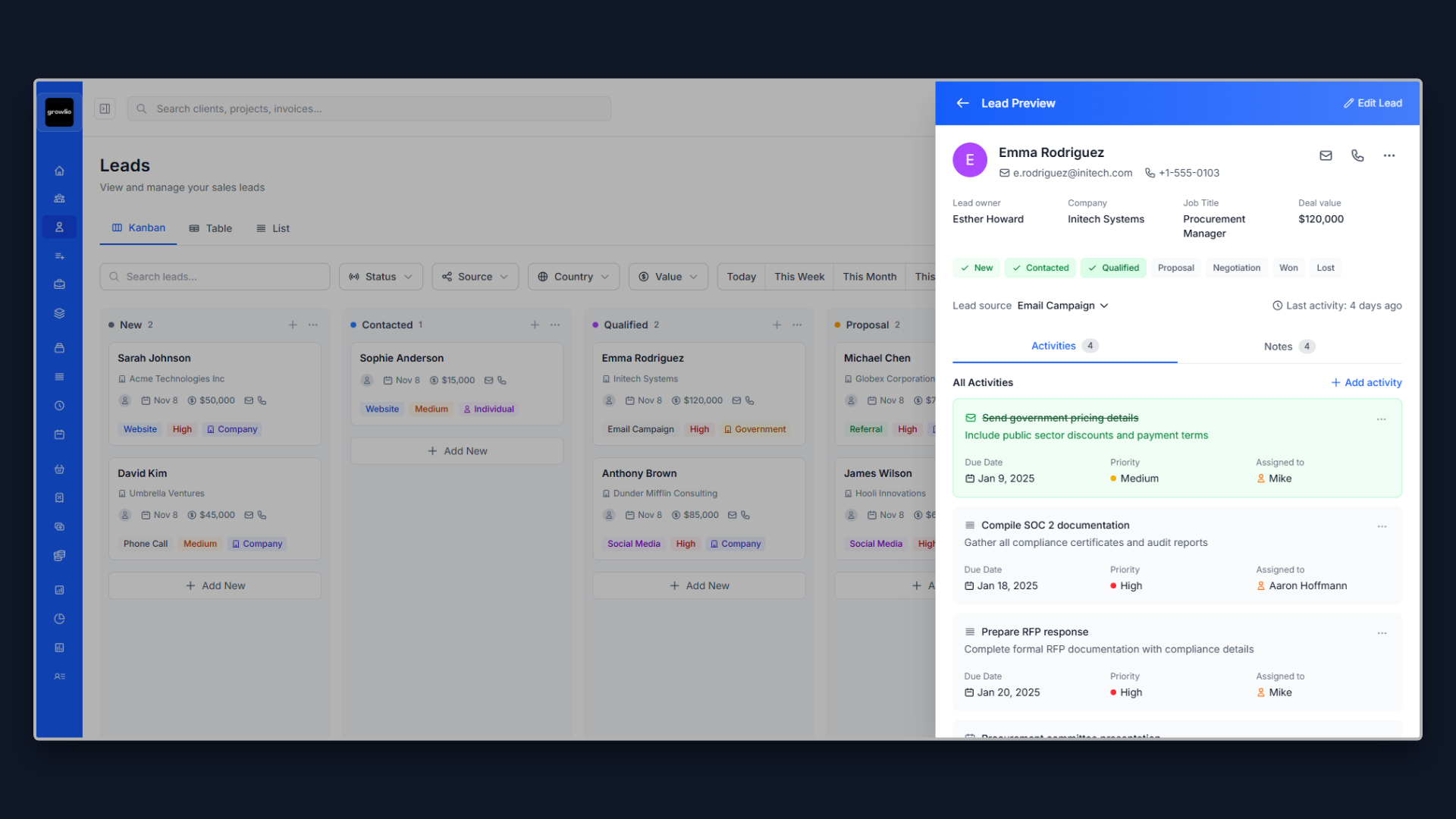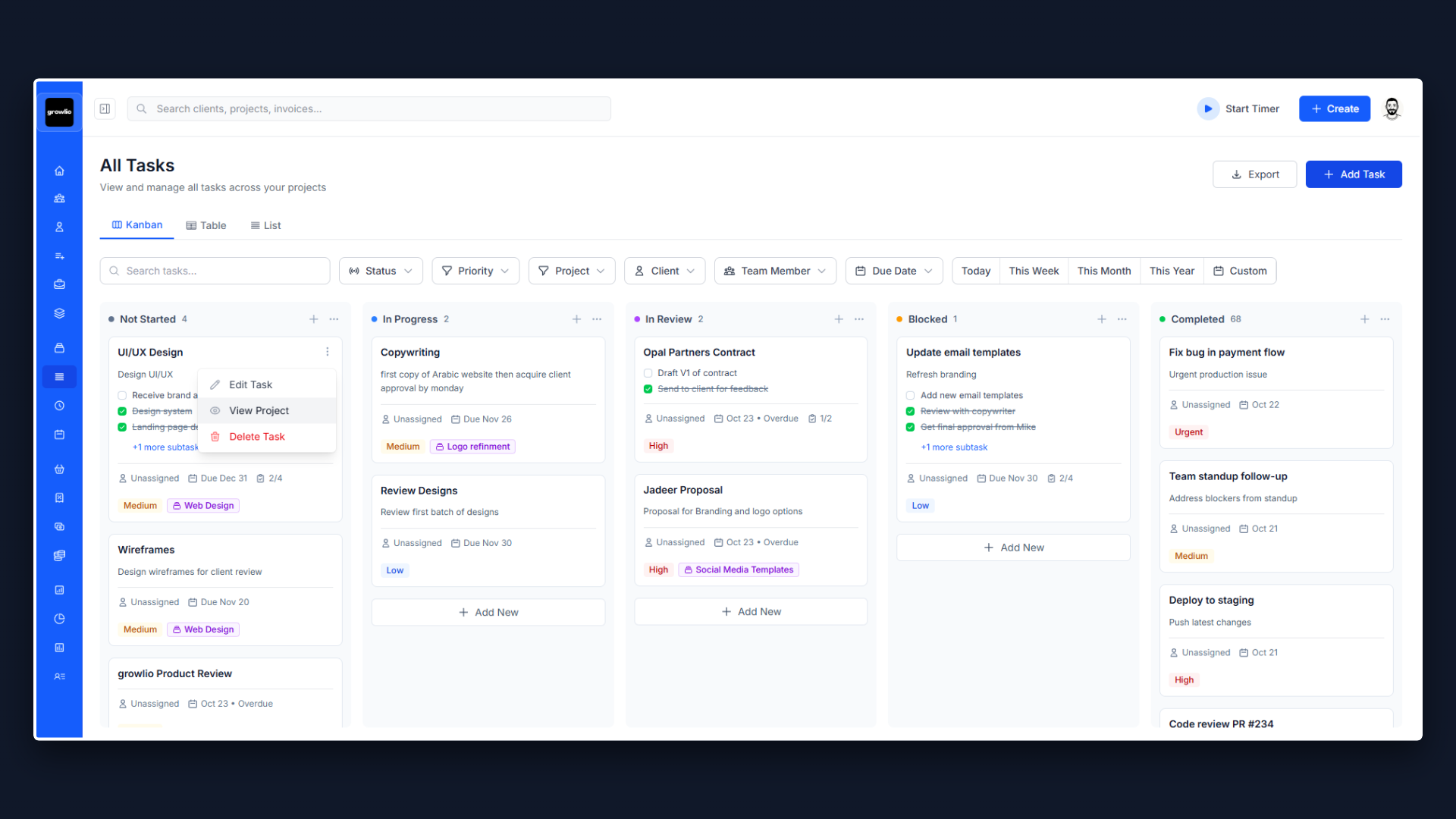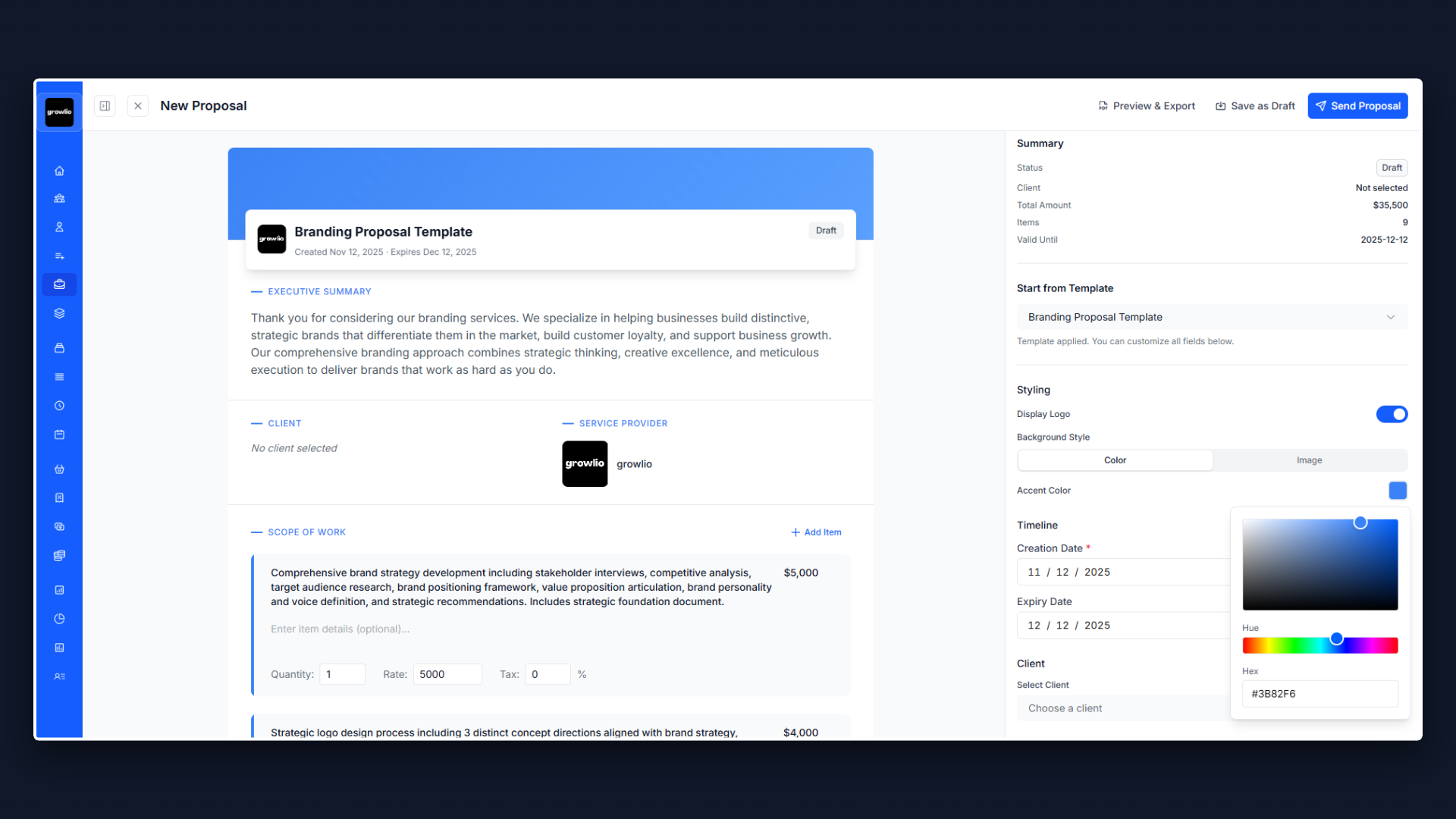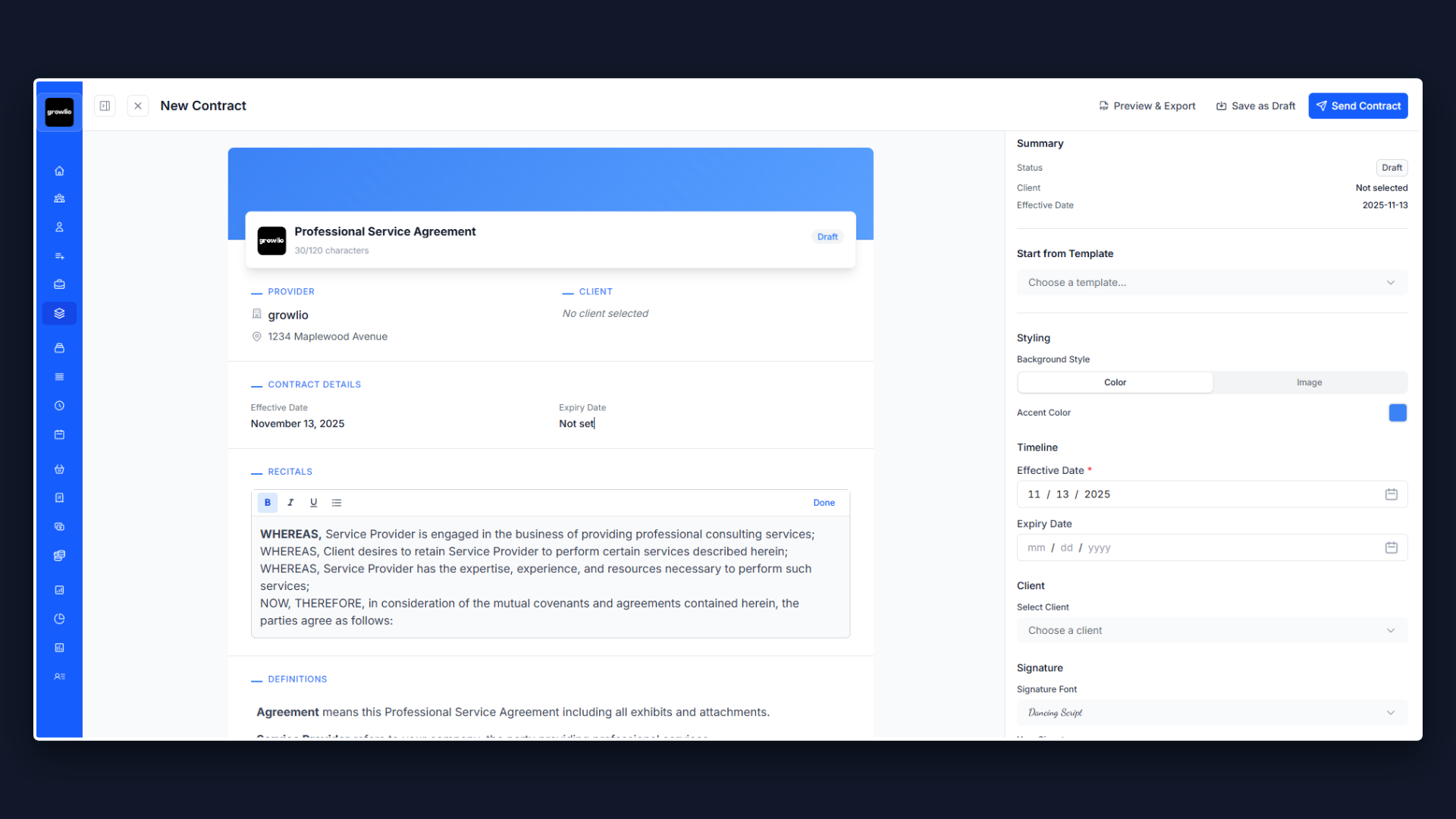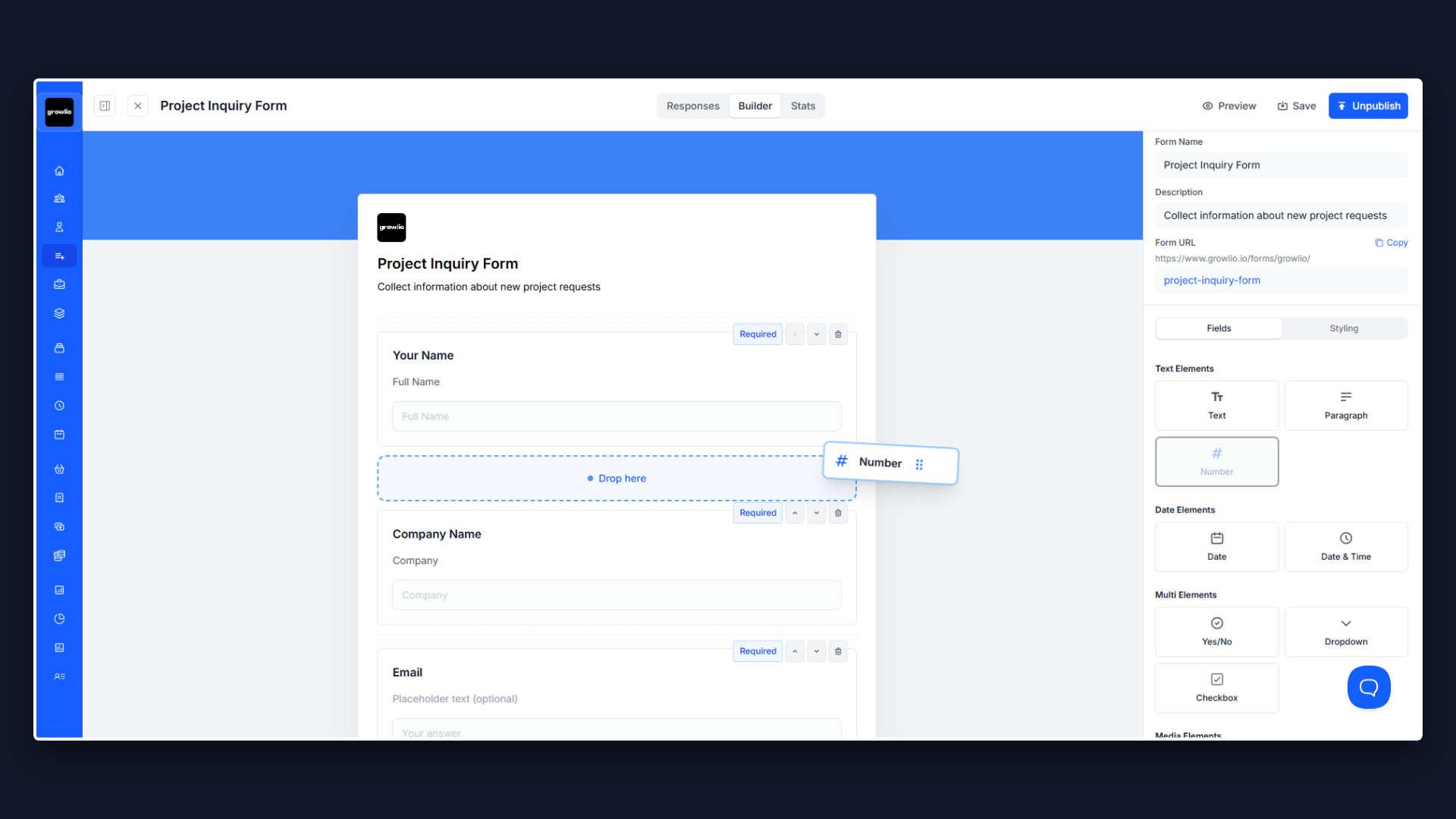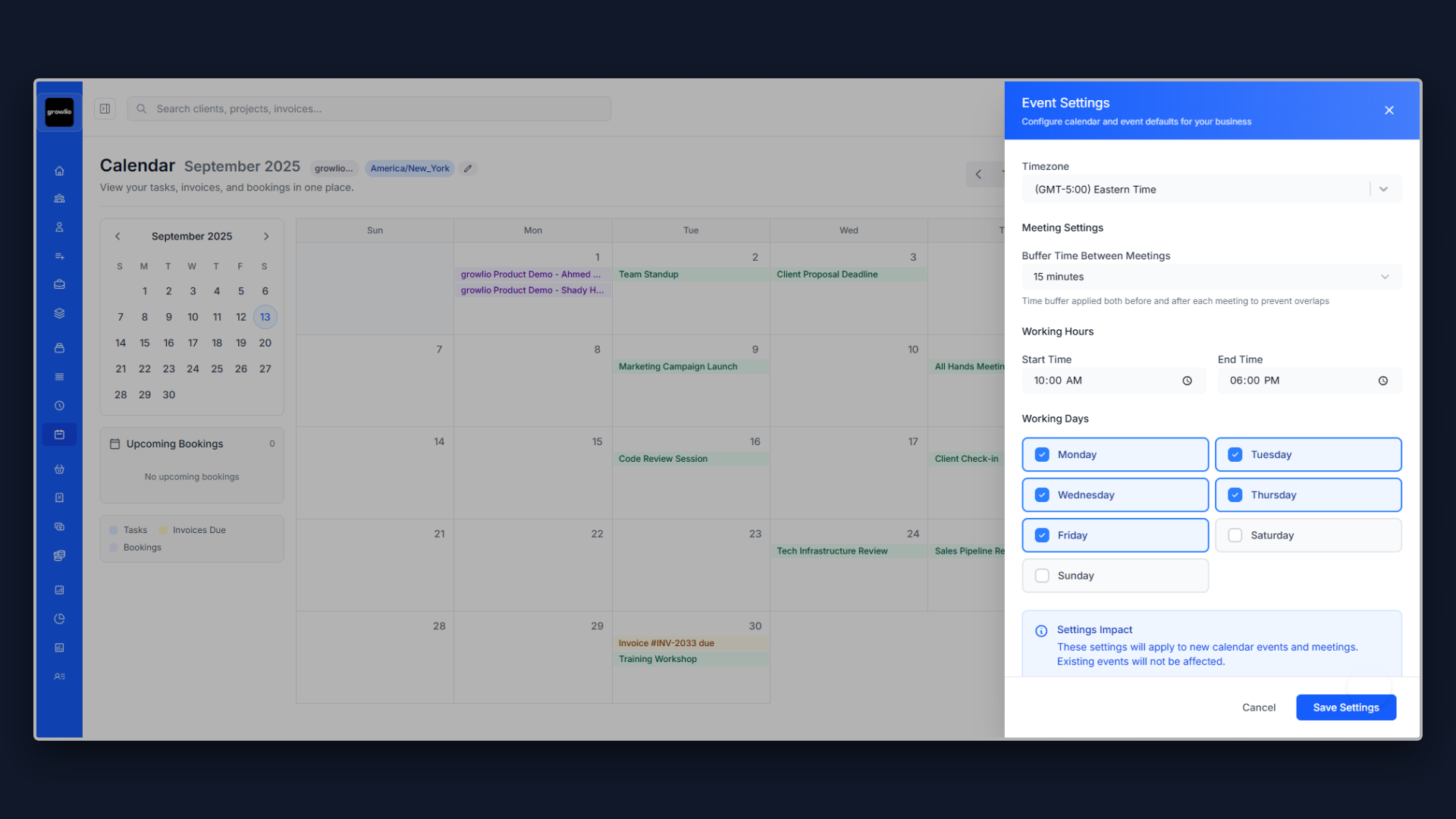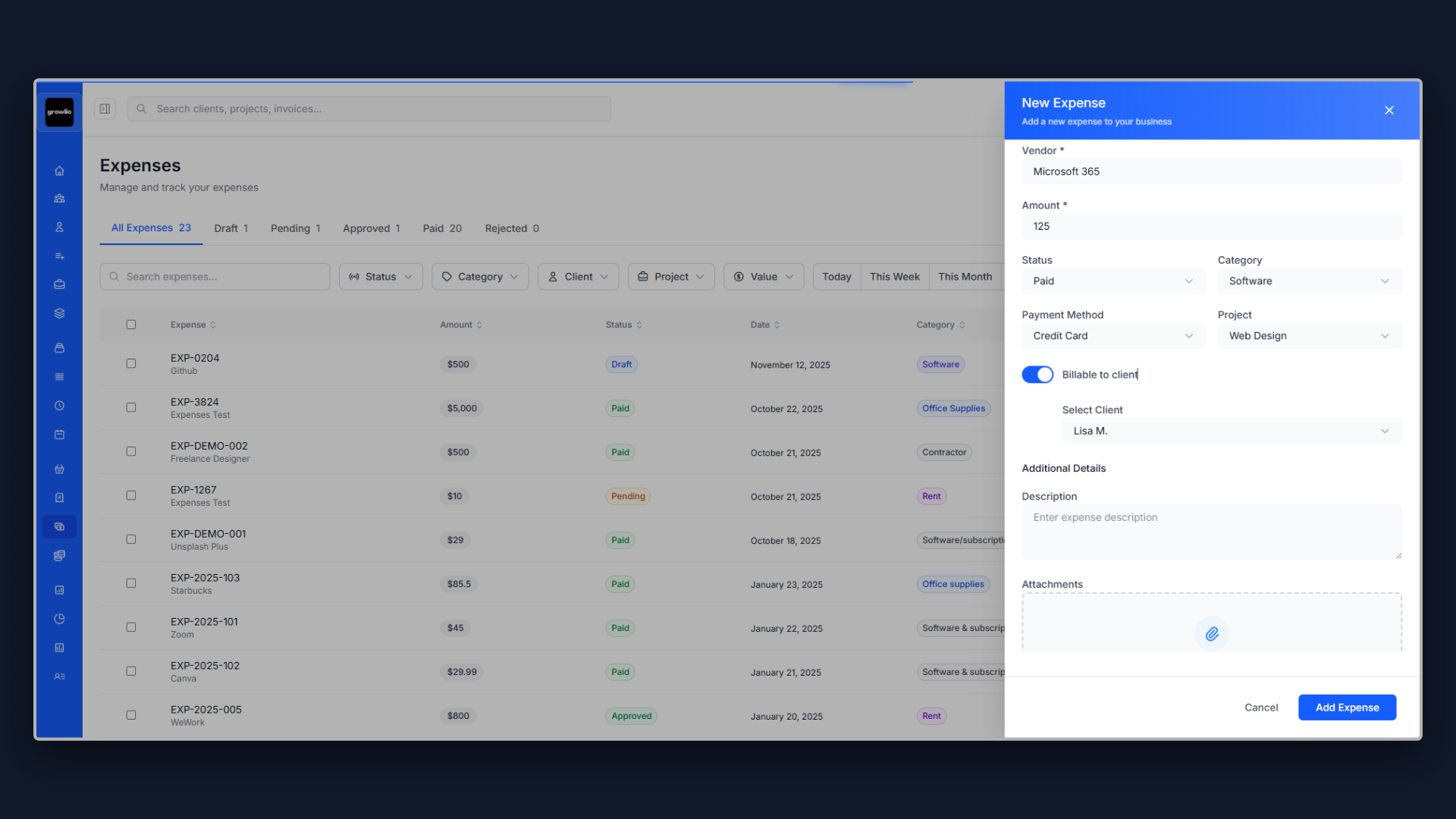Why Your Photography Proposal Makes or Breaks Your Business
Here is what most photographers get wrong: they lead with their camera equipment, portfolio, and years of experience. They talk about shooting with Canon or Sony, their lighting setup, and the number of weddings or products they have photographed before understanding what the client actually needs the images to accomplish or how they will be used.
The result? Proposals that showcase technical skills but miss business objectives. Clients cannot differentiate between photographers because everyone shows beautiful images and lists impressive gear. Price becomes the only decision factor. Projects deliver technically perfect photos that do not serve the intended marketing purpose. And clients wonder why their expensive photo shoot did not drive the results they expected.
A professional photography proposal does something different: it demonstrates you understand that photography is not about capturing images, but about solving business problems through visual storytelling. It educates clients on why shot planning, proper licensing, and understanding usage drives value more than megapixels or lens quality. It sets realistic expectations about deliverables, revision limits, and usage rights.
This template gives you the exact framework to create proposals that win photography projects at profitable rates while ensuring images serve the client's actual business objectives.
1. Start With What They Need Images For, Not What You Shoot
Before discussing your photography style, equipment, or portfolio, understand what business purpose the images serve. Are they for website hero images? Product catalog? Social media content? Print advertising? Editorial features? E-commerce product pages? Each use case has different technical and creative requirements.
Your proposal should demonstrate you understand their context. Address usage considerations: where images will be displayed (web, print, social, billboards), how images support business goals (drive sales, build brand, showcase products), target audience and what resonates with them, competitive visual landscape in their industry, timeline pressures for launch or campaign, and budget constraints affecting scope.
For example: "Your website redesign launching in 8 weeks requires lifestyle imagery showing your products in real-world use to replace current stock photography. Our research shows your target demographic of millennial professionals responds to authentic, unposed imagery rather than staged catalog shots. The 40 hero images and 80 supporting images needed for the site require a 3-day shoot across multiple locations to capture the variety and authenticity your brand positioning demands."
This approach shows you understand marketing objectives, not just photography technique.
2. Photography Type and Creative Approach
Different photography specializations require different approaches. Your proposal should clearly define the photography type and creative direction appropriate for their needs.
Explain photography specialization: commercial photography for advertising and marketing, product photography for e-commerce and catalogs, portrait and headshot photography for corporate or personal branding, event photography for conferences or corporate events, architectural and real estate photography, food photography for restaurants and packaging, fashion photography for apparel and accessories, and editorial photography for publications and press.
Detail creative approach: photography style matching brand aesthetic (clean and minimal, warm and authentic, dramatic and editorial, etc.), mood and tone conveying right message, color palette aligning with brand guidelines, composition style and framing approach, lighting approach (natural light, studio lighting, environmental), and whether images will be lifestyle, product-only, or mixed.
Address style considerations: showing portfolio examples matching desired aesthetic, explaining how style serves business objectives, discussing creative direction and art direction, addressing whether models, props, or locations are needed, and setting expectations about creative control and approval process.
Set expectations: creative direction is collaborative not dictatorial, some experimentation produces best results, style consistency matters across image set, and final aesthetic should serve business goals not just look pretty.
3. Pre-Production Planning and Shot Lists
Great photography shoots are meticulously planned, not improvised. Your proposal should emphasize pre-production as critical to success.
Outline pre-production activities: shot list development detailing every required image, location scouting and securing permits if needed, talent casting and booking if using models, prop sourcing and styling coordination, lighting and equipment planning, crew coordination (assistants, stylists, makeup), schedule development for shoot day, and contingency planning for weather or issues.
Detail shot list development: working with client to identify all needed images, prioritizing shots by importance, estimating time required per shot or setup, grouping shots efficiently by location or setup, planning shot variations (angles, crops, orientations), documenting specific requirements for each shot, and building buffer time for unexpected challenges.
Explain why planning matters: unclear shot lists lead to missing critical images, poor planning wastes expensive shoot time, location issues discovered on shoot day cause delays, inadequate equipment for conditions compromises quality, and missed logistics (permits, models, props) can derail entire shoot.
Set expectations: detailed planning takes time before shoot, client input on shot list is essential, some shots may prove infeasible requiring alternatives, and flexibility during shoot produces better results than rigid plans.
4. Equipment, Lighting, and Technical Setup
While clients should not choose photographers based on gear, your proposal should demonstrate you have appropriate equipment and technical capabilities for their needs.
Outline equipment approach: camera bodies and lenses appropriate for photography type, lighting equipment (strobes, continuous, natural light modifiers), grip equipment (stands, backgrounds, flags), specialized equipment if needed (drone, underwater housing, tethering setup), backup equipment for redundancy, and software for capture and initial review.
Detail lighting approach: studio lighting for controlled environment, on-location lighting for environmental shots, natural light photography maximizing available light, mixed lighting balancing multiple sources, and lighting for specific challenges (reflective products, food styling, architectural interiors).
Address technical specifications: resolution and file size for intended usage, color space (sRGB for web, Adobe RGB for print), file format (RAW for editing flexibility, JPEG for delivery), aspect ratios for different platforms, and technical requirements for specific uses (Amazon product photography, billboard printing, etc.).
Set expectations: equipment choice is means to end not end itself, technical quality is baseline expectation, creative execution matters more than gear specifications, and appropriate equipment prevents technical limitations.
5. Shoot Day Logistics and Timeline
Shoot day must run efficiently to maximize creative output within time constraints. Your proposal should outline detailed logistics and timeline.
Detail shoot day timeline: setup and lighting testing before shooting begins, shot-by-shot schedule with time allocations, breaks for talent and crew, buffer time for unexpected challenges, reviewing images throughout day to ensure coverage, teardown and location cleanup, and total shoot duration with overtime provisions.
Explain logistics management: location access and parking arrangements, load-in and setup time requirements, crew call times and coordination, model arrival and preparation time, catering and hospitality for longer shoots, equipment transportation and handling, and contingency plans for weather or technical issues.
Address efficiency considerations: grouping similar shots to minimize setup changes, scheduling most important shots when energy is highest, allowing creative time not just execution time, managing client expectations about on-set presence, and balancing speed with quality.
Set expectations: shoots rarely go exactly as planned, some shots take longer than estimated, creative exploration sometimes reveals better alternatives, client approval of shots during shoot is helpful, and rushing through shots compromises quality.
6. Image Selection and Culling Process
Shoots generate hundreds or thousands of images requiring editing down to deliverables. Your proposal should explain the selection and culling process.
Outline selection process: initial culling removing obviously flawed images (focus issues, poor exposure, closed eyes), selecting best images from each setup, choosing variety of angles and compositions, ensuring coverage of all shot list requirements, considering how images work together as set, and presenting selects for client review and approval.
Detail deliverable quantities: specifying how many final edited images included in pricing, explaining relationship between images captured and images delivered (typically 10:1 or higher shooting ratio), clarifying whether client can purchase additional images, addressing selection criteria and quality standards, and setting expectations about turnaround time for selects.
Explain selection collaboration: whether client reviews all selects or only final choices, how many rounds of selection refinement, process for requesting specific images be included, handling disagreements about image quality or usability, and finalizing selection before editing begins.
Set expectations: more images captured does not mean more images delivered, selection takes time and expertise, some client favorites may have technical issues preventing use, and proper selection ensures editing resources focus on best images.
7. Image Editing and Retouching
Post-production transforms raw captures into polished final images. Your proposal should clearly define editing scope and standards.
Detail editing services: basic editing (exposure, color correction, cropping, straightening), advanced retouching (blemish removal, product cleanup, background replacement), color grading for consistent look across set, compositing if multiple images combined, dust and sensor spot removal, and style consistency across all deliverables.
Explain retouching levels: basic retouching included in standard pricing (minor cleanup, exposure correction), moderate retouching for typical commercial needs (product perfection, basic portrait retouching), extensive retouching as additional service (major compositing, body shaping, background changes), and setting realistic expectations about editing timeline.
Address editing standards: maintaining natural appearance versus heavy stylization, consistency across image set, file quality and resolution, color accuracy for products, brand guideline compliance, and quality control before delivery.
Set expectations: editing takes significant time (1-2 hours per image for commercial work), excessive retouching looks artificial, some issues cannot be fixed in post requiring reshoot, client feedback on sample edits ensures alignment, and revision limits prevent endless tweaking.
8. Usage Rights and Licensing
Usage rights are critical and often misunderstood. Your proposal must clearly address licensing to prevent disputes and ensure proper compensation.
Explain licensing models: full buyout transferring all rights to client (highest price), limited license for specific uses and duration (standard commercial), royalty-free license allowing multiple uses with some restrictions, rights-managed license with specific usage terms, and editorial use restrictions for certain subjects.
Detail usage specifications: geographic territory (worldwide, North America, specific country), media types (web, print, social, broadcast, outdoor), duration (1 year, 3 years, perpetual), exclusivity provisions, and whether sublicensing is permitted.
Address common usage scenarios: website and social media usage (typically included in base pricing), print advertising and billboards (additional licensing fees), product packaging (significant licensing value), resale or commercial use by third parties (requires appropriate rights), and editorial versus commercial distinction.
Set expectations: broader usage rights increase pricing significantly, usage beyond agreed terms requires additional payment, portfolio and self-promotion uses are separate from client usage, photographer typically retains copyright while granting usage license, and proper licensing protects both parties.
9. Deliverables and File Formats
Clear deliverable specifications prevent confusion and ensure files work for intended uses. Your proposal should detail exactly what client receives.
Outline deliverable specifications: number of final edited images, file formats (high-resolution JPEG, TIFF, RAW if applicable), resolution and dimensions, color space (sRGB for web, Adobe RGB for print), file naming conventions, and organization structure for delivery.
Detail delivery method: online gallery for review and download, cloud storage link with specified access duration, hard drive or USB delivery if preferred, delivery timeline from shoot to final files, and whether files are delivered in batches or all at once.
Address additional deliverables: web-optimized versions for website use, social media formatted crops, print-ready files at specific sizes, RAW files as add-on option, and metadata and keywording if needed.
Set expectations: high-resolution files are large requiring good internet or physical media, file storage is client responsibility after delivery period, additional format conversions available for fee, and deliverable specifications should be confirmed before shoot.
10. Revision Policy and Additional Requests
Unlimited revisions are unsustainable. Your proposal should clearly define revision limits and process.
Outline revision policy: one or two rounds of revisions included in base pricing, revisions addressing technical issues (color correction, exposure tweaking) versus creative changes, timeline for submitting revision requests, additional revision rounds available at hourly rate, and significant changes requiring reshoot priced separately.
Define revision scope: minor adjustments to existing edits versus major rework, changes to image selection versus editing changes, consistent feedback provided once versus piecemeal requests, and distinguishing client preference changes from correcting errors.
Address additional requests: purchasing additional edited images beyond package, requesting RAW files, creating alternative crops or formats, extended retouching beyond included scope, and rush delivery fees for expedited turnaround.
Set expectations: revision limits protect both parties, consolidated feedback is more efficient than multiple small requests, some requests constitute additional services not revisions, and major changes may require reshoot at additional cost.
11. Working With Models, Locations, and Third Parties
Photography often requires coordinating multiple parties. Your proposal should clarify responsibilities and additional costs.
Detail third-party coordination: model casting and booking, model releases and usage agreements, location scouting and booking, location permits and fees, stylists for wardrobe and props, makeup artists and hair stylists, and production assistants or crew.
Explain cost structure: whether third-party costs are included in photography fee or billed separately, typical day rates for various roles, travel costs for location shoots, permit fees for public spaces, insurance requirements for certain locations, and budget contingency for unexpected costs.
Address coordination responsibilities: who handles booking and communication with third parties, who is responsible for payments, timeline for securing locations and talent, backup plans if locations or models unavailable, and client approval of talent and locations.
Set expectations: quality talent and locations increase project cost but also results, early booking secures best options, permit processes take time and approval is not guaranteed, weather-dependent outdoor shoots need rain dates, and professional models understand posing and deliver better results.
12. Project Timeline and Deliverable Schedule
Photography projects have multiple phases beyond just the shoot day. Your proposal should outline the complete timeline.
Detail project timeline: initial consultation and planning (1-2 weeks), pre-production and logistics coordination (2-3 weeks), shoot day(s) as scheduled, initial culling and selection review (3-5 days post-shoot), editing and retouching (1-2 weeks depending on quantity), revision round (3-5 days per round), and final delivery of completed images.
Explain timeline factors: project complexity affecting editing time, number of images affecting turnaround, revision rounds extending delivery timeline, rush fees available for expedited delivery, and seasonal demand affecting availability (wedding season for wedding photographers, holiday season for commercial work).
Address scheduling considerations: booking shoot dates well in advance, flexibility for weather-dependent shoots, coordinating with client launch dates or campaigns, production timelines for print or manufacturing, and buffer time for unexpected delays.
Set expectations: typical turnaround is 2-3 weeks from shoot to delivery, rush projects cost premium pricing, timeline depends on client feedback speed, holiday periods may extend timelines, and quality should not be sacrificed for arbitrary deadlines.
